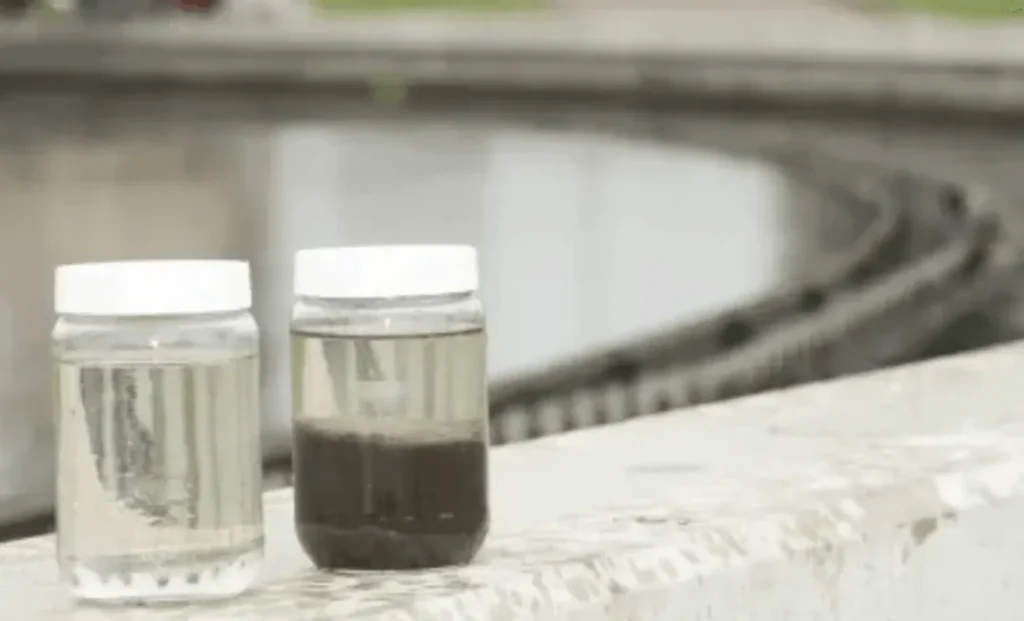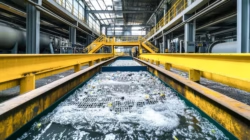What Is Tss In Wastewater Treatment

Title: Understanding Total Suspended Solids (TSS) in Wastewater Treatment
Introduction
In the complex world of environmental management and engineering, wastewater treatment emerges as a critical component in ensuring the health and sustainability of our ecosystems. One of the essential parameters in evaluating the effectiveness of wastewater treatment processes is Total Suspended Solids (TSS). TSS represents the particles suspended in wastewater that are not soluble; these particles can include anything from silt and decaying plant matter to industrial waste contaminants. Understanding TSS is vital not only for efficient wastewater treatment operations but also for maintaining ecological balance.
What are Total Suspended Solids (TSS)?
Total Suspended Solids refer to the solid material, both organic and inorganic, that is suspended in water and can be trapped by a filter. Unlike dissolved solids, which can only be removed by processes such as reverse osmosis or evaporation, TSS are relatively easier to eliminate through conventional filtration or sedimentation methods.
TSS are measured in milligrams per liter (mg/L) and provide critical data regarding the quality of water. High concentrations of suspended solids can harm aquatic habitats by reducing light penetration, clogging fish gills, and smothering spawning grounds. Consequently, managing TSS is a priority in both municipal and industrial wastewater treatment settings.
Sources of TSS in Wastewater
TSS can originate from numerous sources, leading to different challenges in wastewater treatment:
-
- Domestic Sources: Household waste, including organic debris and silt, contributes significantly to TSS levels in municipal wastewater systems.
-
- Industrial Sources: Manufacturing processes can discharge significant amounts of suspended solids, varying from chemical precipitates to metal particles, depending on the industry.
-
- Stormwater Runoff: During rainfall, water flows over surfaces like roads and agricultural fields, picking up soil and other particulates, which eventually find their way into wastewater treatment facilities.
-
- Construction Sites: Construction activities often lead to increased sediment in stormwater runoff, contributing to higher TSS.
The Importance of Monitoring TSS
Monitoring TSS is essential for several reasons:
-
- Compliance with Environmental Regulations: Environmental agencies establish TSS limits to protect water quality, and facilities must comply with these standards to avoid penalties.
-
- Impact on Treatment Processes: High levels of TSS can overload treatment systems, leading to inefficiencies and potentially damaging equipment. Monitoring helps in adjusting processes timely to improve efficiency.
-
- Protection of Ecosystems: By controlling TSS levels before discharge into water bodies, the ecological integrity of aquatic habitats is preserved.
-
- Public Health: Some suspended solids harbor pathogens or toxic compounds, posing health risks. Efficient removal of TSS helps in reducing these risks.
Methods of Measuring TSS
Various methodologies are employed to measure TSS:
-
- Gravimetric Analysis: This traditional method involves filtering a known volume of water to collect suspended materials, drying and weighing the filter. It’s highly accurate but time-consuming.
-
- Turbidimetry: Based on the scattering of light by suspended particles, this method is quicker but less direct, often requiring calibration with gravimetric results.
-
- Remote Sensing and Optical Sensors: Advanced techniques using optical sensors or satellite imagery can estimate TSS over large areas, useful in monitoring environmental bodies of water.
Treatment Processes for Reducing TSS
Several treatment processes are integrated into wastewater facilities to efficiently reduce TSS:
-
- Sedimentation: Also known as settling, this method relies on gravity to separate suspended solids from water in sedimentation tanks or clarifiers.
-
- Filtration: Involves passing wastewater through filters that trap suspended particles. Different media, including sand, cloth, or membrane, can be used depending on the level of filtration required.
-
- Flocculation and Coagulation: Chemicals are added to water to cause smaller particles to clump together into larger masses (flocs) that can be easily settled or filtered out.
-
- Dissolved Air Flotation (DAF): Fine bubbles are introduced to water, adhering to suspended particles and bringing them to the surface where they can be removed.
-
- Biological Treatment: Activated sludge processes use microorganisms to digest organic solids. Though primarily focused on organic compounds, they also inadvertently reduce TSS.
Challenges in Managing TSS
Managing TSS comes with several challenges that wastewater treatment facilities must address:
-
- Variability in Influent Quality: Significant fluctuations in the concentration and composition of TSS can occur due to seasonal changes, industrial activities, or storm events, necessitating adaptive management strategies.
-
- Technology Costs and Maintenance: Advanced treatment technologies that provide superior TSS removal are often expensive and require regular maintenance to function efficiently.
-
- Sludge Disposal: The byproduct of TSS removal processes is usually a concentrated sludge that must be handled and disposed of or treated further, posing its own environmental challenges.
-
- Balancing Treatment with Operational Costs: Achieving regulatory compliance while managing operational costs can be challenging, requiring innovative solutions and efficient resource management.
Future Trends and Innovations
The future of TSS management in wastewater treatment promises exciting developments driven by technology and innovation:
-
- Smart Monitoring Systems: IoT and AI technologies are paving the way for continuous, real-time monitoring of TSS, enabling facilities to respond dynamically to changes in water quality.
-
- Enhanced Membrane Filtration: Advances in membrane technologies offer better durability and efficiency, reducing operational costs and increasing TSS removal efficacy.
-
- Green Technologies: Eco-friendly approaches, such as constructed wetlands and bioreactors, provide sustainable alternatives for managing TSS with minimal environmental impact.
-
- Data Analytics for Process Optimization: Utilizing big data and machine learning to analyze operational data can lead to optimized processing, reducing energy consumption and improving TSS management.
Conclusion
Total Suspended Solids are a fundamental parameter in the treatment of wastewater, impacting the effectiveness of facilities and the health of aquatic ecosystems. With an understanding of their sources, the importance of monitoring, and the various treatment methods available, stakeholders in environmental management can ensure compliance, protect water quality, and promote sustainable practices.
As future technologies evolve and new challenges arise, the management of TSS will remain a dynamic field, showcasing the blend of engineering, innovation, and environmental stewardship necessary to safeguard our water resources for generations to come.

